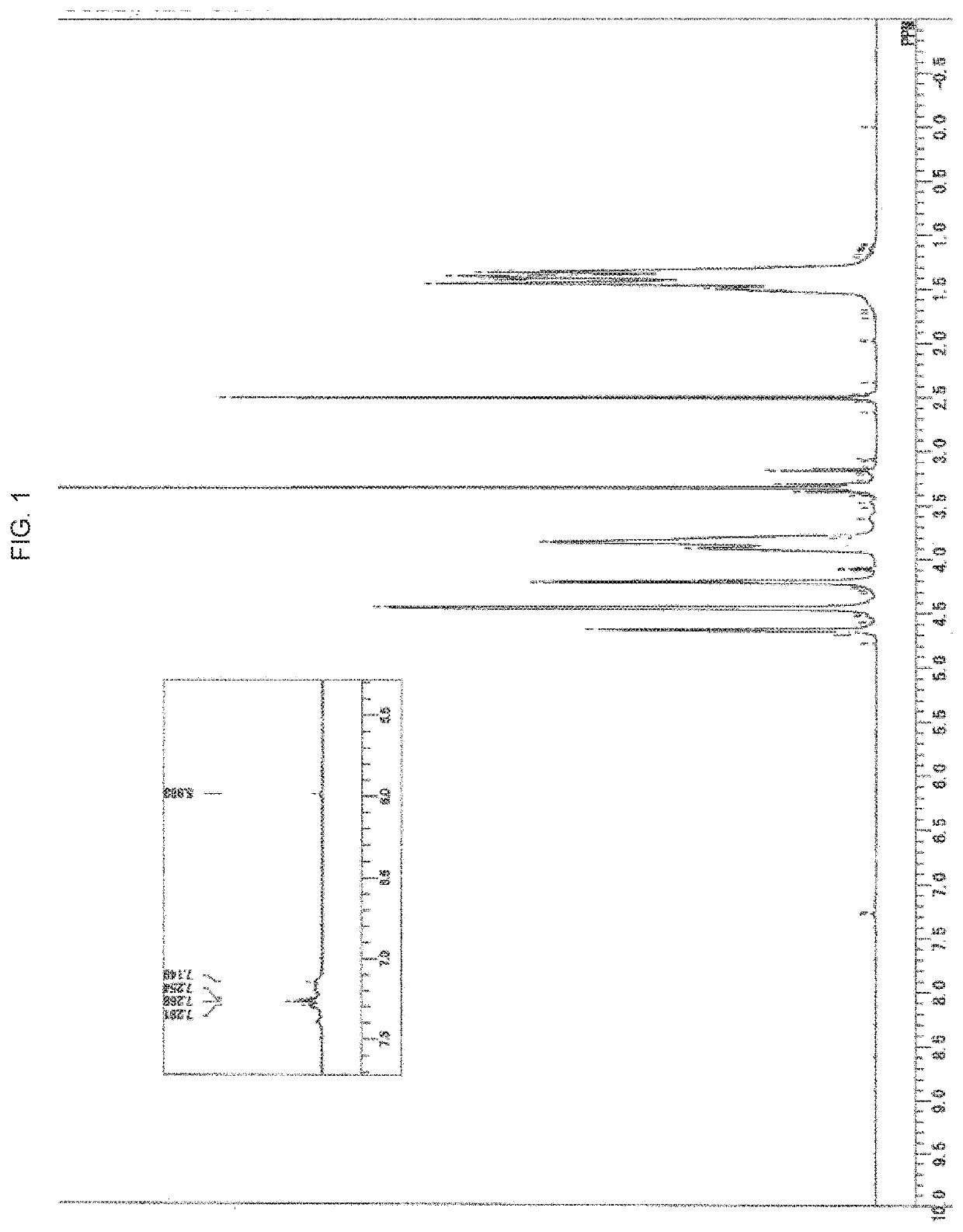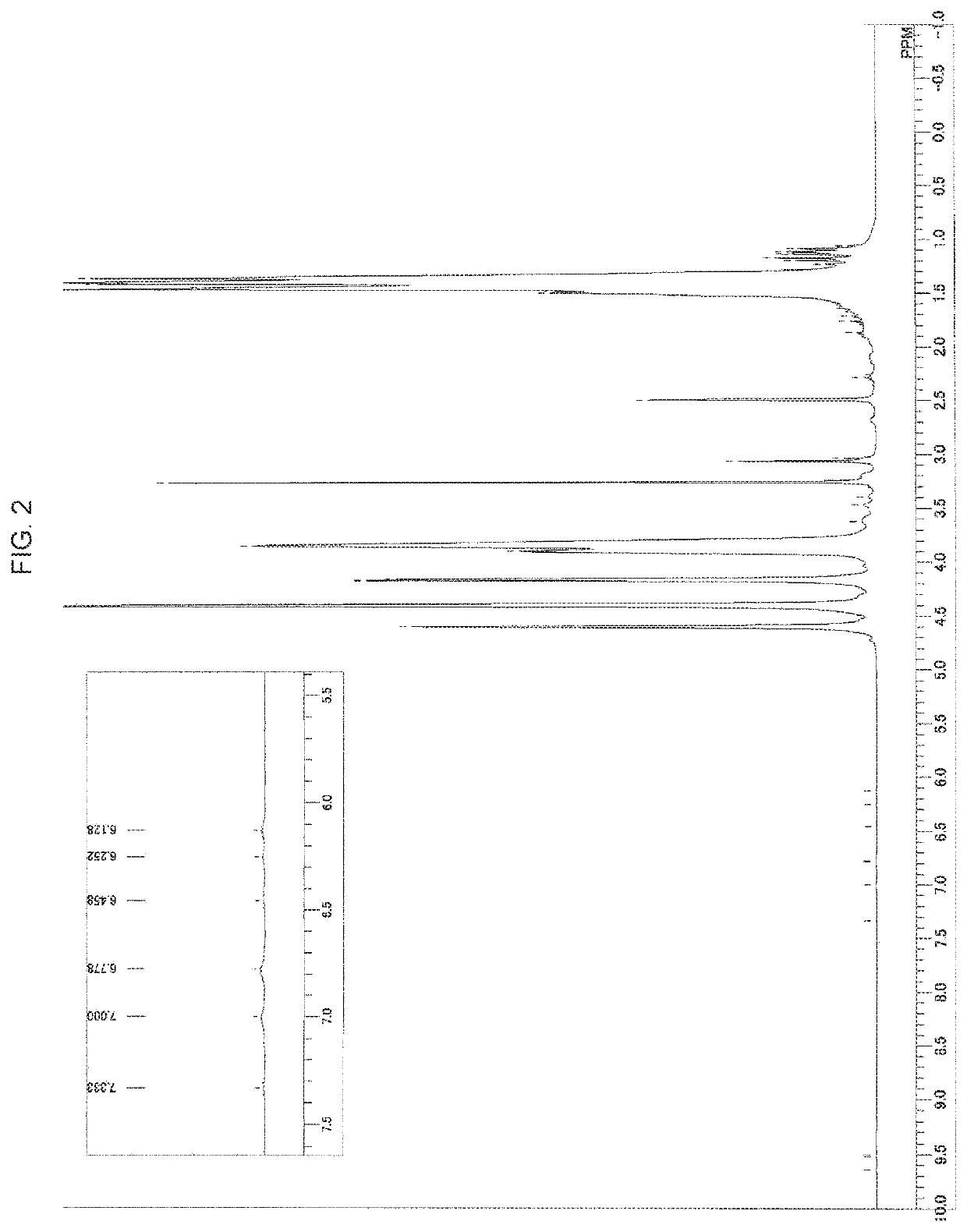Polyvinyl alcohol and method for producing polyvinyl alcohol
a polyvinyl alcohol and polyvinyl acetate technology, applied in the field of polyvinyl alcohol, can solve the problems of no further progress of polymerization reaction, difficult to obtain polyvinyl acetate with a high molecular weight, and general difficulty in precisely controlling the molecular weight distribution, etc., to achieve excellent gas barrier properties, good hue, and high crystallinity
- Summary
- Abstract
- Description
- Claims
- Application Information
AI Technical Summary
Benefits of technology
Problems solved by technology
Method used
Image
Examples
example 1
[0097]To a reactor provided with a stirrer, a reflux condenser tube, and an initiator addition port, 0.24 part by mass of cobalt (II) acetylacetonate as an organic cobalt complex and 0.86 part by mass of 2,2′-azobis(4-methoxy-2,4-dimethylvaleronitrile) as a radical initiator were added. Inert gas purge was performed three times in which inside the reactor was vacuumed and then nitrogen was introduced. After that, 640 parts by mass of vinyl acetate purified by simple distillation was added, followed by immersion of the reactor in a water bath and heating to have an internal temperature at 30° C. and stirring. Sampling was appropriately performed and progress of the polymerization was confirmed from the solid content concentration. When the conversion of vinyl acetate reached 25%, 3.4 parts by mass of 1,1-diphenylethylene was added as a polymerization terminator and stirred at 30° C. After adding the polymerization terminator, 600 parts by mass of an aqueous acetic acid solution (pH o...
example 2
[0100]Polymerization reaction of vinyl acetate was performed in the same conditions as those in Example 1. When the conversion of vinyl acetate reached 25%, 0.8 part by mass of 1,1-diphenylethylene was added as a polymerization terminator and stirred at 30° C. The same operations were conducted later as those in the method described in Example 1 to obtain a polyvinyl acetate. Details of the polymerization step described above are shown in Table 1.
[0101]Then, two-step saponification reaction was conducted in the same method as that described in Example 1 other than changing the amount of the methanol solution (concentration of 14 mass %) of sodium hydroxide to be added to a reactor same as above based on 100 parts by mass of the polyvinyl acetate thus obtained to 16.6 parts by mass (2.3 parts by mass as sodium hydroxide) to yield an intended polyvinyl alcohol. Details of the saponification step are shown in Table 2. The results of measurement and evaluation of the polyvinyl alcohol t...
example 3
[0102]Polymerization reaction of vinyl acetate was performed in the same conditions as Example 1. When the conversion of vinyl acetate reached 20%, 1.9 parts by mass of styrene was added as a polymerization terminator and stirred at 30° C. The same operations were conducted later as those in the method described in Example 1 to obtain a polyvinyl acetate. Details of the polymerization step described above are shown in Table 1.
[0103]Then, to a reactor same as above, based on 100 parts by mass of the polyvinyl acetate thus obtained, 400 parts by mass of methanol was added and dissolved and then the water bath was heated until an internal temperature reached 40° C. while heating and stirring. Here, 10.0 parts by mass of a methanol solution (concentration of 14 mass %) of sodium hydroxide was added and saponified at 40° C. (1.4 parts by mass as sodium hydroxide). A gel product thus generated was ground by a grinder and further left at 40° C. for progress of saponification for 1 hour, an...
PUM
| Property | Measurement | Unit |
|---|---|---|
| yellowness index | aaaaa | aaaaa |
| molecular weight distribution | aaaaa | aaaaa |
| molecular weight distribution | aaaaa | aaaaa |
Abstract
Description
Claims
Application Information
 Login to View More
Login to View More - R&D
- Intellectual Property
- Life Sciences
- Materials
- Tech Scout
- Unparalleled Data Quality
- Higher Quality Content
- 60% Fewer Hallucinations
Browse by: Latest US Patents, China's latest patents, Technical Efficacy Thesaurus, Application Domain, Technology Topic, Popular Technical Reports.
© 2025 PatSnap. All rights reserved.Legal|Privacy policy|Modern Slavery Act Transparency Statement|Sitemap|About US| Contact US: help@patsnap.com



